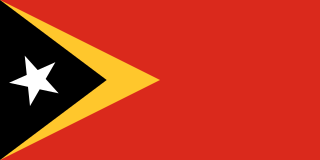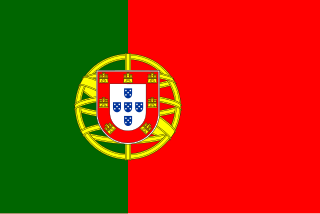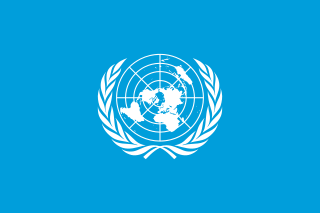 W
WEast Timor is a country in Southeast Asia and Oceania known as Democratic Republic of Timor-Leste. The country comprises the eastern half of the island of Timor and the nearby islands of Atauro and Jaco. The first inhabitants are thought to be descendant of Australoid and Melanesian peoples. The Portuguese began to trade with Timor by the early 16th century and colonised it throughout the mid-century. Skirmishing with the Dutch in the region eventually resulted in an 1859 treaty for which Portugal ceded the western half of the island. Imperial Japan occupied East Timor during World War II, but Portugal resumed colonial authority after the Japanese surrender.
 W
WThe Chinese cemetery of Dili is a historical cemetery in Dili, East Timor. Built in 1889 on land donated by the then Portuguese government, the oldest graves date back to the early 20th century.
 W
WThe Commission for Reception, Truth and Reconciliation in East Timor was an independent truth commission established in East Timor in 2001 under the UN Transitional Administration in East Timor (UNTAET) and charged to “inquire into human rights violations committed on all sides, between April 1974 and October 1999, and facilitate community reconciliation with justice for those who committed less serious offenses.” The idea of a truth commission in East Timor was first agreed by the National Council of Timorese Resistance in 2000.
 W
WEast Timor or Timor-Leste, officially the Democratic Republic of Timor-Leste, is an island country in Southeast Asia. It comprises the eastern half of the island of Timor, the nearby islands of Atauro and Jaco, and Oecusse, an exclave on the northwestern side of the island surrounded by Indonesian West Timor. Australia is the country's southern neighbour, separated by the Timor Sea. The country's size is about 15,007 km2.
 W
WEast Timor was a de facto province of Indonesia, whose territory corresponded to the previous Portuguese Timor and to the presently independent country of Timor-Leste.
 W
WThe East Timor genocide refers to the "pacification campaigns" of state terrorism which were waged by the Indonesian New Order government during the Indonesian invasion and occupation of East Timor. Although some sources consider the Indonesian killings in East Timor to constitute genocide, other scholars disagree.
 W
WThe East Timorese rebellion of 1911–12, sometimes called the Great Rebellion or Rebellion of Manufahi, was a response to the efforts of Portuguese colonial authorities to collect a head tax and enforce the corvée, part of their larger effort to encourage cash crop agriculture and construct modern infrastructure. The countrywide conflict of 1911–12 was the culmination of a series of revolts led by Dom Boaventura, the liurai (chief) of the native kingdom of Manufahi. The first lasted from 1894 to 1901, the second from 1907 to 1908. In 1911 Boaventura led an alliance of local kingdoms in the last and most serious revolt against the Portuguese.
 W
WThe Indonesian invasion of East Timor, known in Indonesia as Operation Lotus, began on 7 December 1975 when the Indonesian military invaded East Timor under the pretext of anti-communism to overthrow the Fretilin regime that had emerged in 1974. The overthrow of the popular and briefly Fretilin-led government sparked a violent quarter-century occupation in which between approximately 100,000–180,000 soldiers and civilians are estimated to have been killed or starved to death. The Commission for Reception, Truth and Reconciliation in East Timor documented a minimum estimate of 102,000 conflict-related deaths in East Timor throughout the entire period 1974 to 1999, including 18,600 violent killings and 84,200 deaths from disease and starvation; Indonesian forces and their auxiliaries combined were responsible for 70% of the killings.
 W
WThe Indonesian occupation of East Timor began in December 1975 and lasted until October 1999. After centuries of Portuguese colonial rule in East Timor, a 1974 coup in Portugal led to the decolonisation of its former colonies, creating instability in East Timor and leaving its future uncertain. After a small-scale civil war, the pro-independence Fretilin declared victory in the capital city of Dili and declared an independent East Timor on 28 November 1975.
 W
WThe International Force East Timor (INTERFET) was a multinational non-United Nations peacemaking task force, organised and led by Australia in accordance with United Nations resolutions to address the humanitarian and security crisis that took place in East Timor from 1999–2000 until the arrival of UN peacekeepers. INTERFET was commanded by an Australian military officer, Major General Peter Cosgrove.
 W
WThe Kraras Massacre was a series of mass killings committed by the Indonesian military, along with Timorese Hansip members, in August and September 1983 in Kraras, Viqueque Municipality, Timor-Leste. More than 200 civilians, mostly men, died in the killings. The region is now known as the "Valley of Widows".
 W
WThis is a list of European colonial administrators responsible for the territory of Portuguese Timor, an area equivalent to modern-day East Timor.
 W
WPortuguese Timor refers to East Timor during the historic period when it was a Portuguese colony that existed between 1702 and 1975. During most of this period, Portugal shared the island of Timor with the Dutch East Indies.
 W
WEast Timor, officially the Democratic Republic of Timor-Leste, is a country in Southeast Asia. It comprises the eastern half of the island of Timor, the nearby islands of Atauro and Jaco, and Oecusse, an exclave on the northwestern side of the island, within Indonesian West Timor. East Timor was a Portuguese colony, known as Portuguese Timor, until 28 November 1975,
 W
WTimor is an island in South East Asia. Geologically considered a continental crustal fragment, it lies alongside the Sunda shelf, and is the largest in a cluster of islands between Java and New Guinea. European colonialism has shaped Timorese history since 1515 a period when it was divided between the Dutch in the west of the island, and the Portuguese in the east.
 W
WEast Timor was a de facto province of Indonesia, whose territory corresponded to the previous Portuguese Timor and to the presently independent country of Timor-Leste.
 W
WSome of this article is translated from the existing German Wikipedia article at de:Toko Lay; see its history for attribution.
 W
WTopasses were a group of people led by the two power families – Da Costa and Hornay – that resided in Oecussi and Flores. The Da Costa families were descendants of Portuguese Jewish merchants and Hornay were Dutch.
 W
WUnited Nations Security Council resolution 1272 was adopted unanimously on 25 October 1999, after recalling previous resolutions on East Timor, particularly resolutions 384 (1975), 389 (1976), 1236 (1999), 1246 (1999), 1262 (1999) and 1264 (1999). The Council established the United Nations Transitional Administration in East Timor (UNTAET) that was responsible for the administration of the territory until its independence in 2002.
 W
WThe United Nations Transitional Administration in East Timor (UNTAET) is United Nations protectorate to solve decades long East Timorese crisis in the area occupied by Indonesian military. UNTAET provided an interim civil administration and a peacekeeping mission in the territory of East Timor, from its establishment on 25 October 1999, until its independence on 20 May 2002, following the outcome of the East Timor Special Autonomy Referendum. Security Council Resolution 1272 established the transitional administration in 1999, and its responsibilities included providing a peacekeeping force to maintain security and order; facilitating and co-ordinating relief assistance to the East Timorese; facilitating emergency rehabilitation of physical infrastructure; administering East Timor and creating structures for sustainable governance and the rule of law; and assisting in the drafting of a new constitution and conducting elections. It was led by Sérgio Vieira de Mello of Brazil and the Lieutenant General Jaime de los Santos of the Philippines.